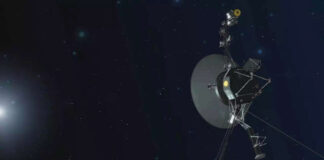AUGUST 24, 2023

The Vikram lander has made history by becoming the first to land in this region of the moon. The lander and rover have a mission life of one lunar day (14 Earth days).
India’s moon moment is finally here.
Chandrayaan-3 kept its tryst with destiny on Tuesday, soft landing on the lunar South Pole at 6.04 pm on Wednesday a month and nine days after its take-off from the Satish Dhawan Space Centre at Sriharikota.
The moon’s South Pole, where it made the landing, is a permanently shadowed region that scientists believe is rich in resources and can offer ideal landing sites for manned missions in the future.
The Vikram lander has made history by becoming the first to land in this region of the moon. The lander and rover have a mission life of one lunar day (14 Earth days) during which it will conduct on-site experiments.
The powered braking of Vikram lander began with the retro firing of four thruster engines to reduce speed. Then came what scientists termed 17 minutes of terror — an entirely automated process that needed to go right based on complete instructions fed to Vikram earlier in the evening.
Close to 150 lunar missions have been run till date by various countries led by the USA and the erstwhile Union of the Soviet Socialist Republic (USSR). Twelve men have gone to the Moon between 1969 and 1972 — Apollo-11 to 17 (Apollo 13 failed to land) — on six successful Apollo missions.
Interestingly, the South Pole is the region NASA is targeting with the return-to-the-moon Artemis III mission that aims to take astronauts to the Moon and back in 2025.
Key facts to know about the lander and rover and the on-site experiments that are planned:
The lander has a mission life of one Lunar day, which is equivalent to 14 Earth days. It has a mass of 1749.86 kg including Rover.
There are four scientific payloads in it — Radio Anatomy of Moon Bound Hypersensitive Ionosphere and Atmosphere (RAMBHA) will measure the near-surface plasma (ions and electrons) density and its changes with time.
Chandra’s Surface Thermophysical Experiment (ChaSTE) will carry out the measurements of the thermal properties of the lunar surface near the polar region.
Instrument for Lunar Seismic Activity (ILSA) will measure seismicity around the landing site and delineate the structure of the lunar crust and mantle.
Laser Retroreflector Array (LRA) from NASA is a passive experiment to understand the dynamics of the Moon system. LRA will have seven sensors including Lander Hazard Detection & Avoidance Camera.
Lander has six mechanisms, which are Lander leg, Rover Ramp (Primary and Secondary), Rover, ILSA, Rambha & Chaste Payloads, Umbilical connector Protection Mechanism, and X- Band Antenna Rover: Laser Induced Breakdown Spectroscope (LIBS) Propulsion Module for qualitative and quantitative elemental analysis.
LIBS will help derive the chemical composition and infer mineralogical composition to further our understanding of the lunar surface.
Alpha Particle X-ray Spectrometer (APXS) will determine the elemental composition such as magnesium, Aluminium, Silicon, Potassium, Calcium, Titanium and Iron) of lunar soil and rocks around the lunar landing site.










































































































